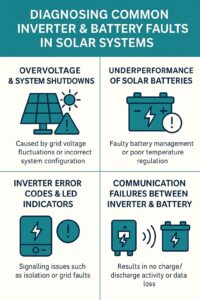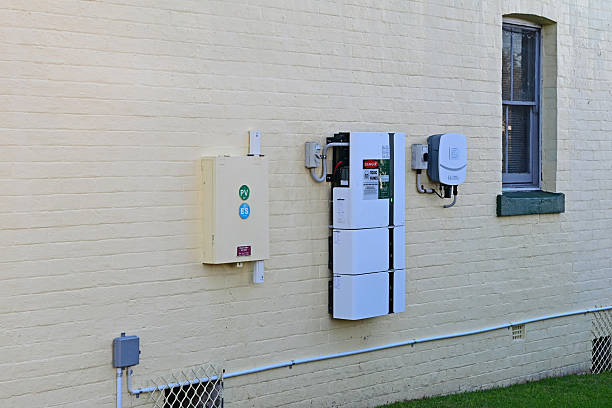Solar systems have become increasingly popular across Perth for their long-term savings and environmental benefits. However, maintaining peak system performance requires prompt identification and resolution of inverter and battery faults. Understanding these common issues not only prevents costly downtime but also extends the operational lifespan of your solar investment.
Understanding the Role of Solar Inverters & Batteries
Solar inverters convert DC electricity generated by solar panels into AC electricity suitable for household or business use. Meanwhile, solar batteries store excess energy for use during peak hours or grid outages. When either component underperforms or fails, the system’s overall efficiency is compromised.
1. Overvoltage and System Shutdowns
One of the most frequently encountered inverter issues in Perth’s high-sunlight conditions is overvoltage. This occurs when the inverter receives more electricity than it can safely handle, triggering an automatic shutdown. Causes include:
- Grid voltage fluctuations (common in suburban networks)
- Incorrect system configuration
- Panel oversizing without proper voltage matching
Troubleshooting Tip: Use voltage logging tools to identify fluctuations. An experienced technician can adjust inverter settings or install voltage optimisers to stabilise performance.
2. Underperformance of Solar Batteries
In a typical solar battery Perth setup, performance degradation can stem from:
- Poor temperature regulation (excessive heat in summer months)
- Inadequate charging cycles
- Faulty battery management system (BMS)
Early signs include faster-than-normal depletion, failure to charge fully, or limited discharge capacity. If left unchecked, it may lead to full battery failure and void warranties.
Troubleshooting Tip: Review BMS logs and ensure the unit operates within the manufacturer’s optimal temperature range. Cleaning air vents and repositioning the battery may help avoid overheating.
3. Inverter Error Codes & LED Indicators
Modern inverters display error codes that signal issues such as:
- Isolation faults
- Grid faults
- Overtemperature warnings
- Arc faults
Each manufacturer uses unique codes, but red or flashing LED lights typically signal an urgent fault.
Troubleshooting Tip: Reference the manufacturer’s manual for error code meanings. Resetting the inverter may clear minor faults, but persistent codes require professional diagnosis.
4. Communication Failures Between Inverter & Battery
Many systems now rely on hybrid inverter setups that must synchronise with the battery’s BMS. Communication faults result in:
- No charge or discharge activity
- Incorrect performance reporting
- Data loss from monitoring apps
Troubleshooting Tip: Ensure firmware is updated and check the physical data cable or wireless connection. Reset both the inverter and battery to reinitiate the handshake protocol.

5. Grid Compliance and Western Power Settings
Perth-based systems must comply with Western Power voltage and frequency settings. Non-compliance can lead to frequent shutdowns or restricted export to the grid.
Troubleshooting Tip: Confirm inverter configuration matches local DNSP (Distribution Network Service Provider) parameters. This may require certified installer support for software-level adjustments.
Preventative Measures for Long-Term Reliability
- Regular maintenance inspections: Identify early-stage faults before they affect performance.
- System monitoring apps: Use platforms that track inverter output and battery health in real time.
- Firmware updates: Keep inverter and battery software up to date for improved compatibility and fault resolution.
- Professional servicing: Engage a licensed solar technician for annual system health checks and recalibration.
Choosing the Right Support in Perth
When troubleshooting issues with solar inverters Perth or ensuring optimal function of your solar battery Perth, it’s essential to work with professionals experienced in local conditions, electrical regulations, and technology-specific diagnostics. Whether it’s addressing error codes or replacing failing components, prompt action safeguards your system’s return on investment and long-term performance.
Conclusion
Effective solar system operation hinges on timely fault diagnosis and informed intervention. Overvoltage, underperformance, communication errors, and inverter faults are all common but manageable with the right technical insight. For Perth households and businesses, proactive troubleshooting and ongoing maintenance are critical in maximising solar output and reliability.
If you’re experiencing persistent solar system issues, consider consulting a qualified solar technician who understands the nuances of Perth’s grid and climate.

